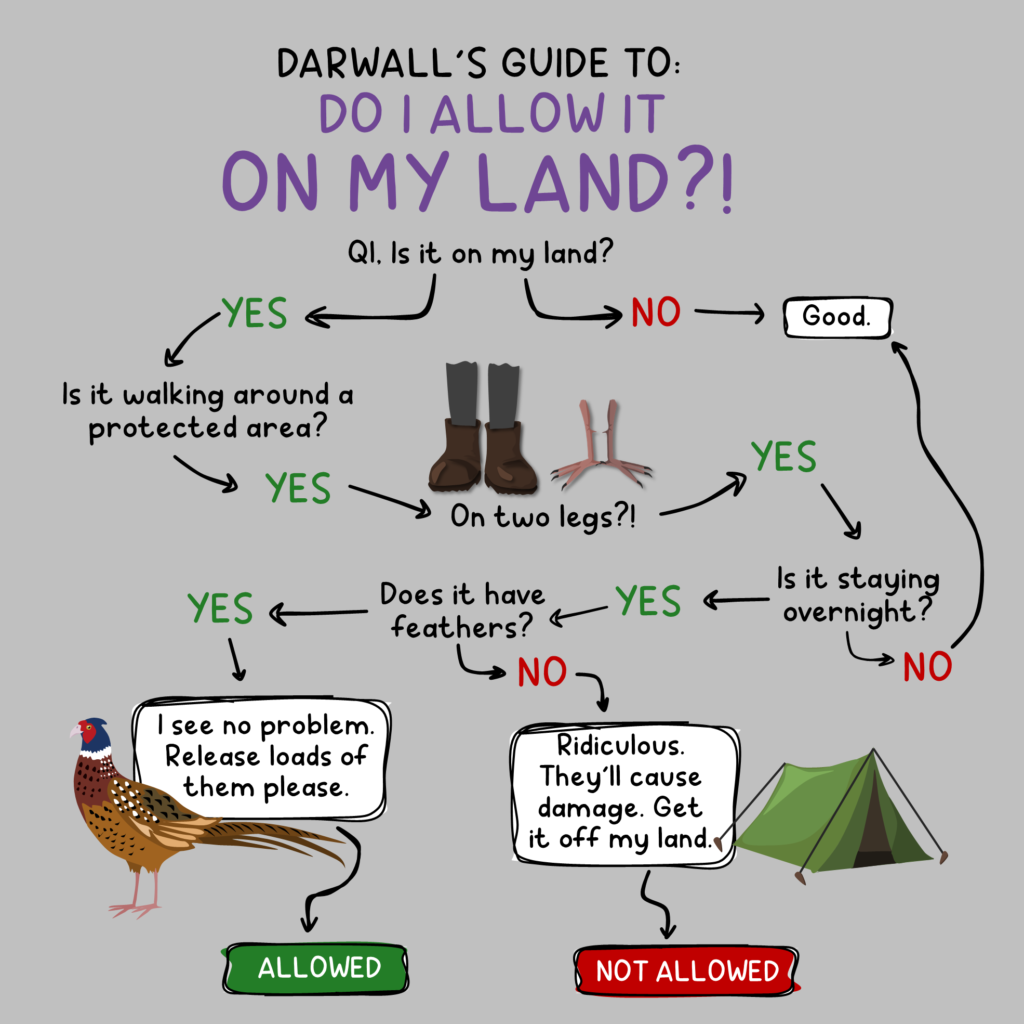Pheasants camping out in Dartmoor woods

You might have heard about Dartmoor in the news quite a lot recently – see, for example, here. In January this year, the owner of a Dartmoor Estate, Mr Alexander Darwall, won the right to remove people found wild camping on his land.
Prior to this, it was assumed under local law that a right to wild camp existed without having to ask permission from the landowner. Whilst public outcry derided the decision, describing it as impairing people’s ability to spend time in nature, another issue came to our attention.
On trespasses undertaken by Right to Roam and the Stars Are for Everyone campaigners, it was noticed that a large number of Pheasants were wandering in and around protected areas of the Blachford Estate (Darwall’s Estate on Dartmoor). In particular, one rather beautiful National Nature Reserve called Dendles Wood.
Dendles Wood NNR is a protected area – it’s part of the larger Dendles Wood Site of Special Scientific Interest (SSSI) and is also part of the much larger Dartmoor Special Area of Conservation (SAC). The NNR is owned mostly by Natural England, and partly by South West Water, but lies adjacent to Darwall’s Blachford Estate. The SSSI is an area of temperate rainforest with a ground flora of mosses and many lichens on the trees, and it is also home to the rare Blue Ground Beetle Carabus intricatus.
Following the reports of lots of Pheasants in and around Dendles Wood, we decided to do some digging. Inspecting the estate on Google Earth, it looks as though Pheasants are being released from at least one pen on the Blachford Estate in close proximity to Dendles Wood – only 225m away in fact. This raised a few questions for us…
It seems inevitable that free-roaming birds released at such proximity to Dendles Wood are going to enter the protected site. In studies reviewed for Natural England, Pheasants are increasingly recognised as being a threat to native flora and fauna. Pheasants can affect other (real) wildlife through direct predation of invertebrates, browsing or grazing of flora, direct scratching of ground vegetation and through nutrient deposition via faeces.
Natural England’s management plan for Dendles Wood, spanning 2015-2020 (no updated plan seems to be available), lists high Pheasant stocking rates as a potential threat to Blue Ground Beetle populations in the NNR/SSSI.
We’ve asked our lawyers to write to Natural England. We’re concerned that harm to biodiversity from Pheasants released close to Dendles Wood is quite likely – so we’ve asked Natural England lots of questions about local Pheasant releases, and what steps Natural England has taken to regulate gamebird releases since they identify Pheasant numbers as a potential threat to the site. Our 16 detailed questions are in the letter below.
This issue goes to the role of Natural England as a regulator of protected sites, and in this case as a landowner too. According to the Natural England website (click here), the latest assessments of the condition of the four SSSI units of Dendles Wood were in the years 2009-2011 – more than a decade ago – can that be right?
You can read our letter, which was sent to Natural England yesterday, below – and we’ll tell you how they reply.
